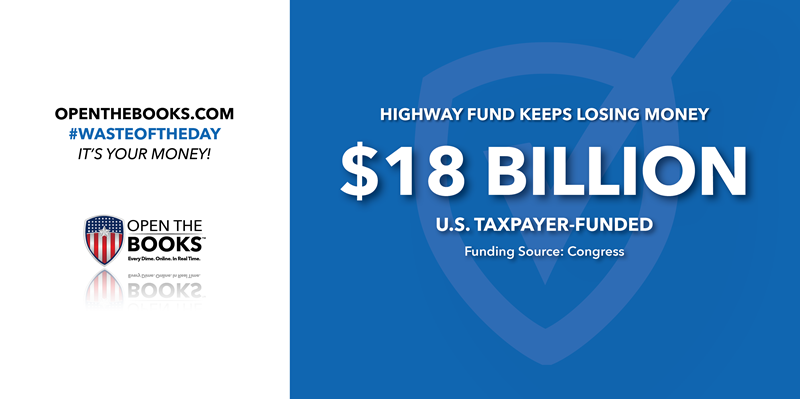
EPA Spent $5.3M in Covid Aid on Environmental Justice Programming
May 23, 2022

Under the guise of Covid-19 relief in 2021, Congress gave the Environmental Protection Agency $5.3 million for its Environmental Justice Small Grants Program. With another $2.2 million in "baseline [Environmental Justice] appropriation,” the grants were awarded to 99 organizations to address “health outcome disparities from pollution and the COVID–19 pandemic.”
In practice, these grants had virtually nothing to do with addressing the pandemic, according to a report.
In one project, a nonprofit named Speak for the Trees, used its grant money for storytelling and tree walks to “increase awareness and dialogue surrounding inequitable tree canopy cover and its implications on the health of residents living in [environmental justice] communities,” according to Fox News.
Another nonprofit, Teaching Responsible Earth Education, received funding to “establish an empowering, school curriculum-integrated environmental education program for younger students propelling their awareness of problems like climate change and the injustices they create.”
Other grants went to projects like building electric vehicle charging stations. While this may seem like a reasonable EPA project, Congress designated the $5.3 million from the American Rescue Plan Act for Covid relief and recovery.
The EPA defended these projects to Fox News by saying that the American Rescue Plan funding, “allows communities to implement solutions that can improve conditions related to COVID-19 such as air quality issues.”
Highway Trust Fund Loses Average of $18B Per Year
May 24, 2022

The Highway Trust Fund that finances most federal government spending for highways and mass transit is projected to lose an average of $18 billion per year in the next several years.
That’s according to the Federal Fumbles report from Republican Sen. James Lankford (Okla.).
President Dwight Eisenhower created the Highway Trust Fund in 1956 as part of the Federal Aid Highway Act to sustainably fund interstate roads without adding to the federal deficit.
The law authorized the construction of a 41,000-mile network of interstate highways across the nation. It also gave $26 billion to pay for them. Under the terms of the law, the federal government would pay 90 percent of the cost of expressway construction.
Today, almost 70 years after the act passed, the federal highway system has grown to almost one million miles of road, while the funding mechanism — a fuel user fee — has remained basically the same.
The fuel user fee was last raised in 1993 and is not tied to inflation or the cost of living, the report noted. More fuel-efficient cars have decreased fuel demand while increasing road demand. With the rapid growth of the highway system, it’s no wonder that outdated funding mechanisms have led to fiscal problems.
Trouble began in 2001, when highway spending growth outpaced revenues. In 2008, Congress transferred $8 billion in funding to help the fund break even. Those transfers grew larger and larger, and between 2008 and 2020, Congress transferred the fund over $143 billion.
Congress still refuses to fix the root causes of the problem, and as part of the Infrastructure Investment and Jobs Act, it transferred $273 billion to help the fund stay solvent for the next five years. In those years, the fund is expected to run a $109 billion deficit, notwithstanding the additional Congressional funding.
Yet again, Congress continues to treat symptoms of problems instead of fixing them for the long term.
PA Teacher’s Union Donates $40,000 To School Board Candidates – Who Now Plan to Vote on New Teacher Pay Contract
May 25, 2022

Pennsylvania entrepreneur Paul Martino donated $60,000 to school board candidates running in his local school district elections last November. He funded candidates who promised to return schools to classroom instruction.
The Pennsylvania State Education Association saw this as an immediate threat and funneled at least $40,000 to back their preferred candidates in Martino’s home school district, Central Bucks.
In the local district, those union-funded, Democratic candidates raised $122,000, compared to the $95,000 raised by the outsider-candidates, and partially funded by Martino.
Two of those union-backed candidates – Mariam Mahmud and Tabitha Dell’Angleo – won. Now Martino has rightly asked those two board members to recuse themselves from the upcoming contract negotiations with… the teachers’ union.
The teacher’s union contract expires on June 30 and Martino argues that those candidates are conflicted.
Review the 2021 Central Bucks School District payroll posted at OpenTheBooks.com. The district employs 1,654 people, for $147.7 million. Top-paid teachers include 367 who made the maximum salary of $112,863.
Neither Mahmud and Dell’Angleo, nor the teacher’s union responded to our OpenTheBooks request for comment.
Throwback Thursday: In 1978, USDA Spent $5K to Run Pregnant Pigs on Treadmills
May 26, 2022

Throwback Thursday!
The U.S. Department of Agriculture spent $5,000 in 1978 — over $22,000 in 2022 dollars — to run pregnant pigs on treadmills to relive their boredom and stress.
Sen. William Proxmire, a Democrat from Wisconsin, awarded the USDA his Golden Fleece Award for this silly project.
The study looked at pigs raised in confinement, which at the time made up about 40-50 percent of all pigs raised in America, Proxmire said.
Researchers found a host of problems for pregnant pigs in confinement. They weren’t getting enough exercise, they were bored, and they showed signs of psychological stress, the press release stated.
To remedy these issues, researchers spent money on a treadmill “to identify methods of reducing psychological stress and boredom of the tethered sows during gestation,” according to Proxmire.
While $5,000 may not seem like a lot of money, the meager amount underscores how unnecessary government funding was for this project. Any food production business or industry groups could have easily found $5,000 to conduct this experiment if they found it valuable.
This is not the first time the government has spent your hard-earned tax dollars to run animals on treadmills. In recent years, studies watching shrimps and lizardsrun on treadmills have both been conducted on your dime.
New Hampshire Ski Jump Gets $500K From Federal Budget Omnibus Bill
May 27, 2022

Nansen Ski Jump in Milan, N.H., once the largest of its kind, got a half-a-million-dollar federal grant to restore the behemoth structure.
While that sounds like a worthwhile use of money, the state of New Hampshire owns and manages the jumping facility as a state park. Why are taxpayers in the other 49 states paying for it?
This is a great example of why congressional earmarks were banned for a decade and Tom Coburn called earmarks, “the currency of corruption in Congress.”
Built in 1936, the ski jump was the largest of its time and since fell into a state of disrepair.
The $500,000 secured by Sen. Jeanne Shaheen as a senior member of the Senate Appropriations Committee as part of the $1.5 trillion spending bill will be used for “repairing structural issues with the historic jump’s aging infrastructure,” according to The Berlin Sun.
The #WasteOfTheDay is presented by the forensic auditors at OpenTheBooks.com.